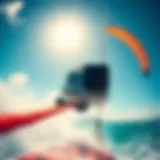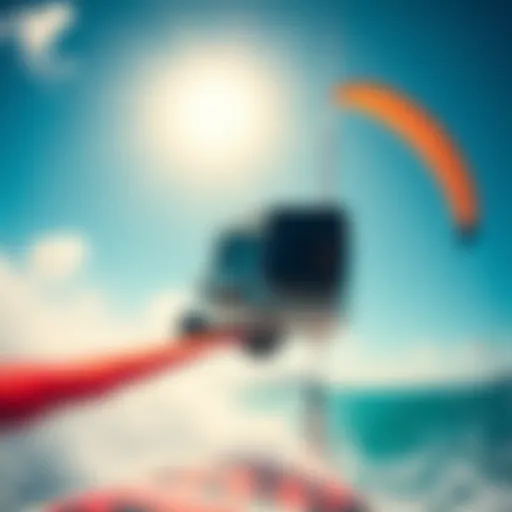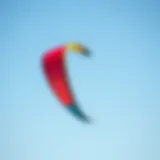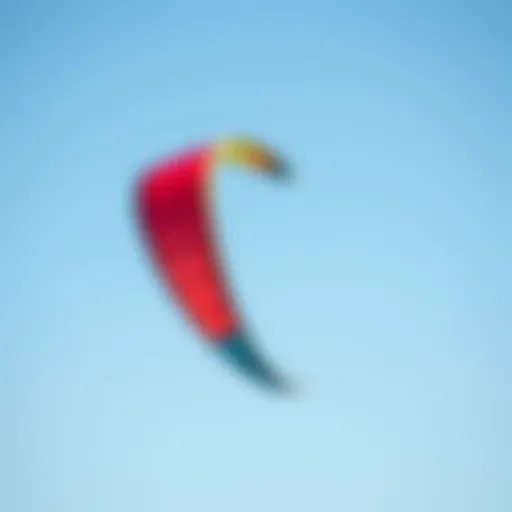Discover the Outer Banks: Beaches and Kiteboarding Tips
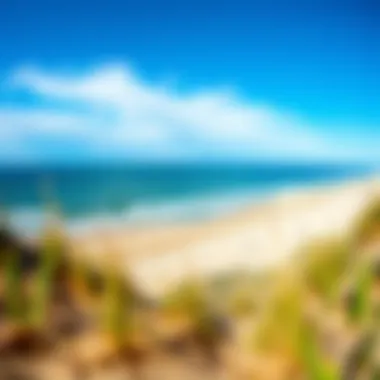
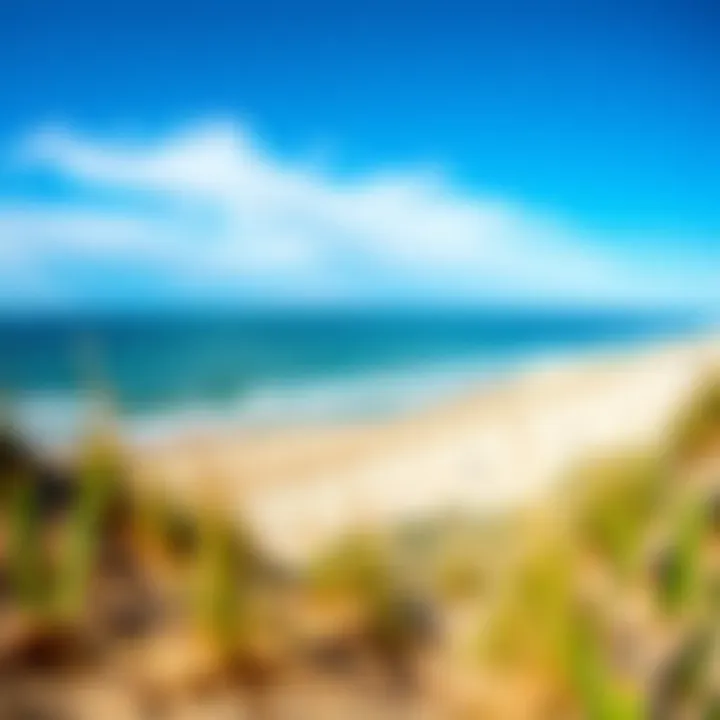
Intro
The Outer Banks, an exquisite stretch of barrier islands off the coast of North Carolina, offers more than picturesque views and sandy shores; it stands as a mecca for kiteboarding enthusiasts. With winds that whisper secrets of adventure and waves that beckon adrenaline seekers, this region has carved out a niche in the hearts of those who dare to ride. From the unblemished beaches of Corolla to the lively atmosphere of Hatteras, every corner presents unique opportunities for both novices and seasoned riders alike.
Navigating this extensive coastline can feel akin to finding a needle in a haystack, especially if you’re after the best kiteboarding spots. But fret not; this guide is crafted to provide kiteboarders—whether instructors, hobbyists, or avid travelers—with vital insights and comprehensive details on equipment, techniques, safety practices, and the kiteboarding community that makes this experience unforgettable.
From the dimensions of a sail to the best wind conditions, every bit of information matters. In the upcoming sections, we will unfold the treasures of the Outer Banks, ensuring you acquire the wisdom needed to both enjoy and excel at kiteboarding in this stunning locale.
Gear Insights
When it comes to kiteboarding, the right gear can be the difference between a thrilling day on the water and a frustrating battle against the elements. Each piece of equipment plays a crucial role, so let's delve into what you need to make the most out of your kiteboarding experience.
Latest Gear Reviews
The kiteboarding scene has evolved tremendously with advancements in technology. Here are some of the standout gear items making waves in 2023:
- North Kiteboarding Reach: A favorite among many, this model combines stability with speed. Its responsive handling makes it suitable for both beginners and those looking to perfect their tricks.
- Cabrinha Switchblade: This kite is known for its versatility. Whether you’re in light winds or tackling stronger gusts, the Switchblade holds up remarkably, providing consistent performance.
- Liquid Force Happy: Ideal for those looking at freestyle. The Happy board’s construction offers excellent flex, allowing riders to absorb impacts without compromising performance.
Essential Gear for Beginners
For newcomers to kiteboarding, starting off on the right foot—or right board—is essential. Here’s what you should focus on:
- Kite: Select a size that matches the wind conditions. Generally, a 9 or 10-meter kite works well for beginners in average wind.
- Board: Go for a direction board that provides good floatation. It should be wide and stable to help with balance.
- Harness: Don’t skimp here. A comfortable, supportive harness makes all the difference in your ride.
- Safety Leash: This is vital—it keeps you connected to your kite while allowing you to detach when needed.
"The wind is your friend. Respect it, and it will guide you across the water with grace."
Before hitting the waves, make sure you’ve got the local regulations down pat. Each beach may have particular rules that can affect your kiteboarding plans, including designated launch areas and restricted zones.
Techniques and Tips
Having the right gear is just half the battle; mastering the techniques comes next.
Advanced Tricks and Techniques
Once you’ve established the basics, you can start to incorporate advanced maneuvers into your routine, creating a more exhilarating experience:
- Jumping: Timing your kite pull and edge control is crucial. Practice your timing on flat water before launching into higher waves.
- Handle Pass: This trick not only looks stylish but also adds flair to your riding. With practice, you'll learn to pass the handle behind your back while airborne.
Safety Practices for Kiteboarders
Safety should always come first in the world of kiteboarding. Here are some key practices to keep in mind:
- Know Your Limits: Don’t push into conditions that are beyond your skill level.
- Check the Weather: Wind patterns can change in a blink. Always watch for shifts and potential storms.
- Buddy System: Kiteboarding with a friend not only makes for good company but also increases safety.
As you traverse through the exhilarating world of kiteboarding in the Outer Banks, remember, each ride is a chance to connect not only with the ocean but also with fellow enthusiasts who share your passion for adventure.
In the forthcoming sections, we will elaborate further on the unique characteristics of each beach, sculpting a solid roadmap for your unforgettable kitesurfing journey.
Preamble to the Outer Banks
The Outer Banks are a unique stretch of barrier islands along the coast of North Carolina, functioning as a treasure for both kiteboarding enthusiasts and casual beachgoers alike. Spanning over 100 miles, this sandy haven is defined by its stunning natural beauty, a laid-back atmosphere, and rich history. Understanding the essence of the Outer Banks is crucial for anyone looking to experience its numerous recreational opportunities, especially kiteboarding. The area’s wind patterns, tidal influences, and geographical quirks significantly impact the kiteboarding experience, making it a prime location for thrill-seekers.
Exploring the Outer Banks involves more than just finding a good spot to catch some waves. It means embracing the local culture, the community spirit, and the very environment that draws kiteboarders from all corners of the globe. The insights provided here will facilitate informed decision-making, whether you’re a seasoned kiteboarder or a newcomer eager to learn the ropes.
By delving into the geographical and historical backdrop of this iconic region, we’ll uncover not only the best kiteboarding locations but also the factors that shape conditions for riders. Each beach has its own identity and opportunities for adventure, which can enhance your experience beyond just the sport itself.
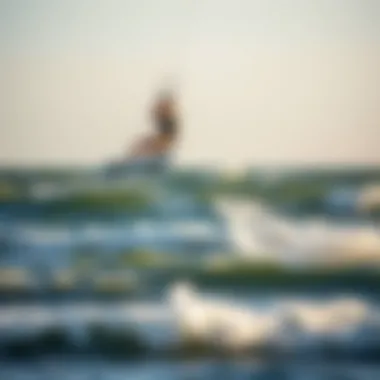
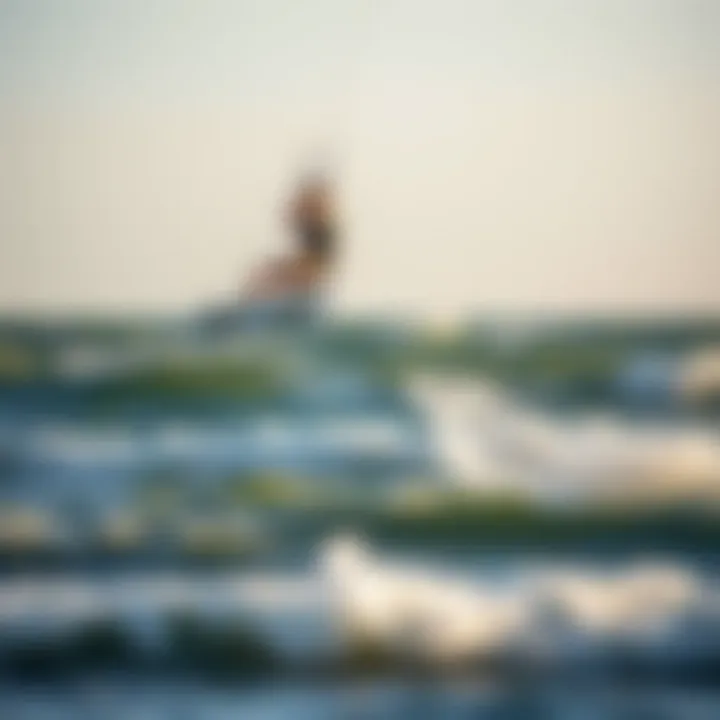
Geographical Overview
The Outer Banks is a geographical marvel, characterized by its elongated chain of islands that separate the Atlantic Ocean from the mainland. They serve as an essential buffer against storms and high tides, creating a unique ecosystem. From Nags Head to Hatteras Island, each region exhibits distinct features.
The geography ranges from sandy beaches to marshy estuaries, ensuring that kiteboarders encounter various conditions. Notably, areas like Jenette’s Pier in Nags Head provides consistent wind, while the shallows around Hatteras Island can create ideal learning conditions for beginners.
Additionally, the shifting sands of the coast mean that local topography changes constantly. Early morning gusts might kick up perfectly flat water, only to be stirred up by afternoon breezes.
Historical Significance
The historical significance of the Outer Banks extends far beyond its picturesque landscapes. It is a region rich with tales of maritime history and adventure, from the infamous flight of the Wright brothers in 1903 at Kill Devil Hills to the many shipwrecks that pepper its waters. This history shapes the cultural fabric of the area today.
Sea captains and fishermen have navigated these waters for centuries, each leaving their mark on the community and its way of life. The culture is deeply intertwined with its maritime legacy, and many locals still engage in traditional practices that honor this proud heritage. Understanding this history will enhance your appreciation for the area, making your experiences here incredibly rich.
As we move forward in this guide, consider the Outer Banks not just as a kiteboarding destination but as a vibrant region filled with stories, beauty, and character, waiting for adventurers to explore.
Beaches of the Outer Banks
The Outer Banks is a strip of barrier islands off the coast of North Carolina, known for its unique beaches that attract visitors from all walks of life. The beaches found here are not just picturesque; they each have their unique charm and kiteboarding opportunities. A thorough understanding of these beaches is invaluable for kiteboarders, who must navigate various conditions and choose the best spots for their adventures.
Across this section, the focus will be on the specific beaches of the Outer Banks. Each beach offers distinct wind patterns, surface conditions, and environments that heavily influence kiteboarding experiences. Knowing which beach suits your skill level and preferences can make a significant difference. Additionally, factors like accessibility and available amenities mustn't fall on deaf ears. Without further ado, let’s dive into each of these stellar locations.
Nags Head
On the northern end of the Outer Banks, Nags Head serves as a backdrop for endless kiteboarding fun. The beach stretches for miles, providing ample space for enthusiasts of all levels. Visitors will appreciate the steady winds typical of this area, especially between spring and fall, creating ideal conditions for kiteboarding.
But that's not all; Nags Head is rich in history and local culture too. Just a stone's throw away, you can find the iconic Jockey's Ridge State Park, home to the tallest dunes on the East Coast. This adds a unique element for those who enjoy combining land and water sports. Be mindful of local regulations regarding kiteboarding spots, as some areas are better suited than others.
Kill Devil Hills
Moving southward to Kill Devil Hills, this beach is not only known for its proximity to the Kitty Hawk, where the Wright brothers made their historic flight, but also for its rather lively waters. The beach here typically experiences a range of wind conditions. This makes it perfect for kiteboarders looking to refine their skills in diverse elements.
Accessibility is a significant advantage here, as the public access points are plentiful. That said, it's crucial to watch out for local surfing spots, as overlapping activities can lead to crowded waters during peak times. A keen focus on both wind and tide will allow kiteboarders to make the most of what Kill Devil Hills has to offer.
Corolla
Further up the coast, Corolla presents a different vibe altogether. Known for its wide open spaces and serene atmosphere, this beach is famous for its wild horses that roam freely. Quite charming, right? In terms of kiteboarding, Corolla delivers consistent winds, especially favourable for novice kiteboarders looking to practice without the intensity of busier beaches.
Moreover, the appeal of Corolla lies in its natural beauty. The lack of high-rise buildings means unspoiled views that truly enhance the experience. There are several spots to launch and land your kite, but always heed the advice of locals regarding the best times to hit the water, since conditions can change swiftly.
Hatteras Island
The southern reaches of the Outer Banks reveal Hatteras Island, a true kiteboarding mecca known for its strong winds and large swells. This location is not for the faint-hearted; it is ideal for experienced kiteboarders seeking challenges and epic sessions. The Cape Hatteras National Seashore offers numerous spots, each with distinct characteristics.
The waters here can be quite choppy, especially in the summer months, providing a playground for those who crave adventure. Keep an eye on the weather patterns, as storms can roll in unexpectedly. It's also wise to stay informed about the local wildlife, as the area is famous for its diverse marine life, which deserves respect and care.
Ocracoke Island
Lastly, Ocracoke Island is perhaps the most remote yet enchanting of the beaches. With its laid-back vibe, it’s perfect for kiteboarders looking to escape the hustle and bustle of other beaches. Here, the wind is oftentimes less predictable, creating a different kind of artistry in kiteboarding. The shallow waters make it ideal for practicing tricks and maneuvers, especially for those testing out their skills.
Additionally, the historical lighthouse adds a picturesque backdrop for your kiteboarding adventure. Just be aware of boat traffic when navigating the waters here, as it can enliven the challenge of kiteboarding even more. The island's isolation doesn’t mean it lacks amenities; charming eateries and small shops provide a way to unwind after a long day on the water.
Navigating the Outer Banks Beaches Map
Understanding the layout of the Outer Banks is crucial for both novice and seasoned kiteboarders. The Outer Banks features a unique geography composed of a series of barrier islands, each with its own distinct character and conditions. A well-configured map allows kiteboarding enthusiasts to navigate the various access points, select ideal spots based on skill levels, and understand the local features that can influence kiteboarding conditions.
Understanding Beach Access Points
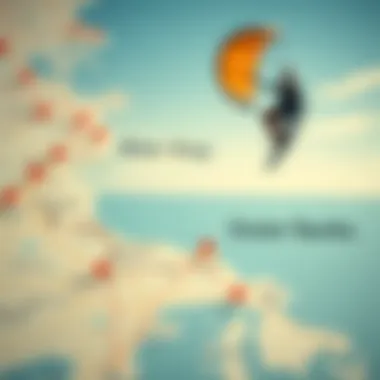

Beach access points are vital for kiteboarders looking to hit the waves in the Outer Banks. These access points, while seemingly straightforward, become particularly important as they impact not just where you can launch your kite, but also the broader kiteboarding experience. A few key points to consider:
- Local Regulations: Each access point may have different rules regarding kiteboarding; some might require specific permits or have restrictions during turtle nesting season. Familiarizing yourself with these regulations can save you from unwanted fines.
- Parking Availability: Ensure that the access point has adequate parking. Some spots, such as Hatteras Village, have more developed facilities while others may be limited or often crowded during peak seasons.
- Proximity to Amenities: Having nearby facilities, like restrooms or shops to buy water or snacks, can greatly enhance your kiteboarding outing. The Ocracoke Island access offers a mix of both stunning beaches and convenient amenities.
- Launch and Landing Zones: Not all beaches are equal when it comes to launching your kite. Some areas might have soft sand conducive to easy launching, while others might be rocky or feature difficult terrain that can make setup challenging. It’s always best to scout the location beforehand if you can.
Having a detailed map not only simplifies your journey but also helps you maximize your time in the water. Navigating the Outer Banks’ beaches is about balancing adventure with safety and awareness, and a great map can be your best ally.
Key Landmarks and Features
The Outer Banks is dotted with landmarks and features that make kiteboarding more than just a sport; it’s an adventure filled with varying landscapes and conditions. Here are some notable aspects:
- Lighthouses: Historic structures like the Cape Hatteras Lighthouse offer not only stunning views but also serve as great navigational aids on the water. Moreover, they create unique backdrops for your kiteboarding excursions.
- Sandbars and Sheltered Areas: Key spots like the Frisco Day Use Area offer sheltered waters during strong winds, making them perfect for beginners or those looking to practice more technical maneuvers.
- Wildlife Refuges: Be mindful of areas designated as wildlife refuges, as kiteboarders must respect the local habitats, especially during nesting seasons. It’s part of keeping the balance between enjoying the thrill of kiteboarding and protecting the precious ecosystems.
- Natural Dunes and Vegetation: Understanding the geography will help you predict wind patterns and tidal influences. Dune formations can create microclimates where wind conditions may differ significantly from just a few miles away.
Remember to keep your map handy and be aware of surroundings at all times, ensuring a smooth and enjoyable kiteboarding experience on the Outer Banks.
Kiteboarding Conditions and Insights
Kiteboarding is a sport that thrives on the capricious nature of wind and water. For anyone looking to catch some air on the Outer Banks, understanding the specific kiteboarding conditions is essential. These conditions encompass various elements including wind patterns, tidal influences, and safety considerations. When you know the lay of the land—or in this case, the water—you enhance your chances of having an invigorating and safe experience. This section covers these fundamental factors, providing would-be kiteboarders with the necessary information to navigate successfully.
Wind Patterns
Wind is the lifeblood of kiteboarding. It holds the key to whether an outing will be successful or an uphill struggle. The Outer Banks are blessed with consistent wind patterns, especially from spring to fall. The prevalent winds often blow from the southeast to the northwest, which creates ideal conditions for kiteboarding.
Local Tips:
- Seasonal Variations: In spring, the winds tend to be lighter, perfect for beginners. Summer usually brings stronger winds, excellent for those with more experience. Fall remains an ideal choice for both, as it offers moderate winds alongside warm weather.
- Kite Sizes: The wind strength plays a critical role in selecting the right kite size. In lighter winds, larger kites work well. Conversely, heftier winds call for smaller kites; choosing the right gear can mean the difference between a fun day and an exhausting one.
Tide Influence
Tides add another layer of complexity to kiteboarding conditions. The Outer Banks experience dynamic tidal changes that can significantly affect your beach experience. Understanding the tides is paramount for selecting the best time to hit the water.
Why it Matters:
- Lower Tides: When the tide goes out, some spots become shallow, making them more suitable for beginners as they face fewer obstacles.
- High Tides: Conversely, higher tides may swell certain areas, providing challenging but exciting conditions for advanced kiteboarders looking to test their skills.
- Timing Your Sessions: Consider checking a tide chart before planning your day. Apps like Tide Charts or local NOAA resources can give you the up-to-date information.
Safety Considerations
Diving into kiteboarding without understanding safety is like going into a storm without an umbrella. The Outer Banks have their fair share of hazards, and being well-prepared can save both lives and injuries.
Understanding Rip Currents
Rip currents can be an insidious hazard for any water sports enthusiast. These powerful channels of water can pull swimmers and kiteboarders away from shore unexpectedly. Recognizing them is crucial, especially when conditions change rapidly.
Key Characteristics:
- Visibility: Look for darker water or foam and seaweed moving away from shore; this could indicate a rip current.
- Safety Measures: Always check local warnings or advisories. It’s wise to kite in areas monitored by lifeguards, and never kite alone. Local kiteboarding schools frequently provide lessons that cover these safety issues.
Local Wildlife Precautions
The biodiversity of the Outer Banks adds beauty but can also present challenges for kiteboarders. Respect for local wildlife is paramount both for the ecosystem's sake and the user's safety.
Understanding the Local Scene:
- Breeding Areas: Certain beaches have restrictions during nesting seasons for birds and turtles. Be aware that landing near these zones could be illegal and detrimental to wildlife.
- Shark Sightings: Though rare, sightings have happened. Stay informed by checking local social media or community boards. Inquire about any recent shark activity before heading out into the water. Emergency services or local wildlife agencies can also provide guidance on safe practices.
By grasping the wind patterns, tidal influences, and safety precautions, you'll be setting yourself up for success in kiteboarding. These are not merely tips; they are essential insights that ensure an enjoyable experience in the varied environments of the Outer Banks.
Recommended Gear for Kiteboarding in the Outer Banks

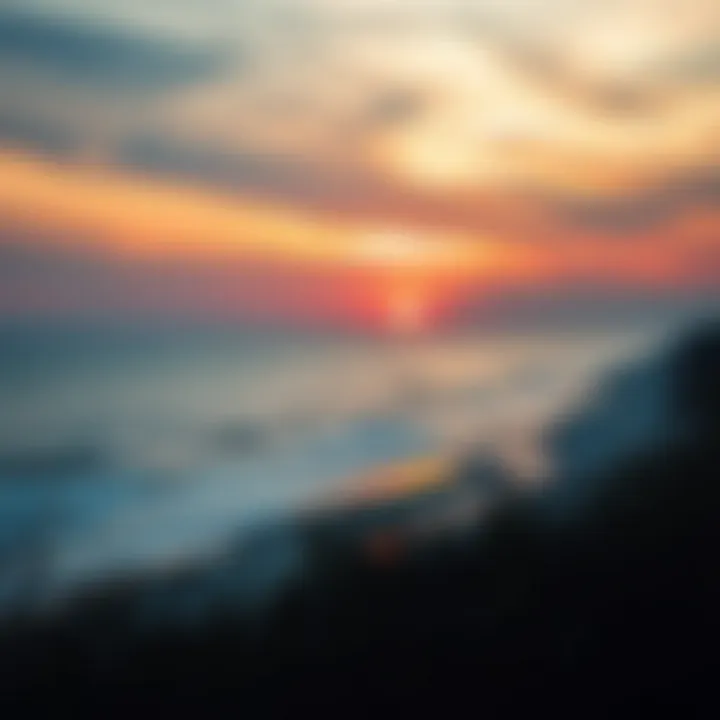
When it comes to kiteboarding in the Outer Banks, having the right equipment isn't just a luxury; it's a necessity. The ever-changing conditions of wind and water demand gear that can handle everything from gusty squalls to calm days, making your choice of kite and supplementary gear crucial for safety and performance. This section delves into what you need, why it matters, and how to make informed decisions that enhance your kiteboarding experience on these beautiful beaches.
Best Kites for Local Conditions
The wind patterns across the Outer Banks can swing from gentle breezes to robust gusts in a heartbeat. Therefore, selecting the right kite is paramount. Here are a few key points to consider when choosing a kite for kiteboarding here:
- Size Matters: Generally, a kite's size should reflect the wind conditions. For example, during the summer, a larger kite (like a 12m) might be favorable, whereas the autumn might call for something smaller (like a 9m) due to stronger winds.
- Type of Kite: In the Outer Banks, both leading edge inflatables (LEIs) and bow kites perform well. LEIs are highly favored for their stability and ease of relaunch, particularly in challenging situations. Bow kites, known for their impressive power and range, can be excellent choices on days with shifting winds.
- Durability Considerations: The coastal elements can be pretty harsh on gear. Kites made from ripstop nylon or polyester fabrics will withstand wear and tear better than others. Choosing a kite with reinforced seams is also something to consider, as it will hold up against the rough conditions often found in the Outer Banks.
"Having the right kite is like having the right tool for a job; it makes all the difference in how well you perform in variable conditions."
Safety Equipment Essentials
As exhilarating as kiteboarding can be, it's essential to keep safety at the forefront. The Outer Banks' open waters can pose risks that are often overlooked. Here’s a robust list of crucial safety equipment you should never leave the shore without:
- Impact Vest: Unlike regular life jackets, impact vests offer extra cushioning during wipeouts while allowing more freedom of movement. It’s a necessary investment for the sporty kiteboarder.
- Quick-Release Harness: This is vital for emergencies. If conditions change suddenly, being able to detach yourself from the kite promptly can prevent accidents that may otherwise occur.
- Helmet: Protecting your noggin is no jest. Choose a kite-specific helmet that fits well and is comfortable during use. This adds an extra layer of safety, particularly for novice and intermediate riders still mastering their skills.
- Leash: A kite leash is essential to keep your kite under control. There are various options available, but ensure to select one that’s reliable and ideally incorporates a quick-release feature.
- Safety Whistle: In the event you need assistance, a safety whistle can be a lifesaver. Ensure it’s attached to your harness for quick access.
Community and Culture of Kiteboarding
Kiteboarding isn’t just a sport; it’s a vibrant community stitched together by the winds and tides of the Outer Banks. This culture encompasses riders, instructors, enthusiasts, and even seasoned spectators who share a common passion for catching air and riding the waves. Connecting with others in this realm adds depth to the kiteboarding experience and fosters a supportive environment for both novices and pros. The camaraderie found among kiteboarders makes this not just about individual achievement but about a collective love for the ocean and the thrill of the sport.
Being part of the kiteboarding community in the Outer Banks also means embracing local values. Enthusiasts often emphasize respect for the environment and the need for safety while riding. These principles not only protect the unique coastal ecosystems but also promote responsible enjoyment of the sport. By understanding each other, sharing knowledge, and encouraging one another, kiteboarders cultivate a rich culture that welcomes newcomers and veteran riders alike.
Local Kiteboarding Clubs and Events
Joining a local kiteboarding club can be a game-changer. Not only does it connect you to fellow riders, but it also opens doors to exclusive events and learning opportunities. Clubs in the Outer Banks often organize kiteboarding sessions, workshops, and competitions that cater to various skill levels, making it easy for anyone to jump in.
Here are a few notable kiteboarding clubs in the area:
- Outer Banks Kiteboarding: Offers lessons for all ages and skill levels, and organizes events throughout the year.
- Cape Hatteras Kiteboarding Association: Focused on conservation and promoting safe practices while riding. They also host annual gatherings that often turn into big parties!
- Kiteboarding Club of Hatteras: A social hub where members can share tips, ride together, and participate in group events.
Events such as the Hatteras Kiteboarding Festival showcase local talent and attract kiteboarders from around the world. These gatherings are not just about competition; they provide a chance for participants to bond over shared experiences and learn from each other's stories.
Sharing Experiences and Stories
The beauty of kiteboarding lies not only in the adrenaline rush it provides but also in the stories that emerge from each ride. Local kiteboarders often share their unforgettable moments, whether it’s a breathtaking sunset session or the first time they successfully pulled off a trick. These narratives reflect the challenges faced, friendships formed, and lessons learned on the water.
Sharing these experiences, whether on social media platforms like Facebook or forums on Reddit, allows riders to inspire each other. Many also highlight essential tips, such as how to deal with tricky winds or the best hidden spots that aren’t well-known to tourists. The exchange of knowledge is invaluable, especially in a location as dynamic as the Outer Banks.
Moreover, kiteboarding blogs and vlogs have popped up, documenting journeys and adventures. Riders provide insights into gear selection, weather patterns, and even local customs, enhancing the community bond. These platforms serve not merely as a canvas for individual stories but as a collective archive, preserving the spirit and culture of kiteboarding in this unique region.
"Kiteboarding is not merely a sport; it is a family of thrill-seekers, united by the waves and the wind."
Ultimately, the community and culture surrounding kiteboarding in the Outer Banks enrich the experience, imbibing it with a sense of belonging and shared joy. Whether you’re a local or visiting, tapping into this community will undoubtedly enhance your kiteboarding adventures.
Closure
The Outer Banks stand out as a fantastic destination, especially when it comes to kiteboarding. This article has explored various facets of these beaches, offering insights and guidance tailored specifically for enthusiasts at any level. As you navigate these beautiful coastal waters, a few key points emerge that encapsulate the essence of kiteboarding here.
Summarizing Key Insights
First off, what makes the Outer Banks unique is not just the stunning landscapes but the wind conditions, which cater exceptionally well to kiteboarding. Each beach, from Nags Head to Ocracoke Island, presents its own charm and challenges, so it’s vital to understand the specifics of each spot. The natural barriers, like dunes, along with varying water depths, play a significant role in the experience.
- Local Conditions: Familiarity with local wind patterns and tides is crucial. Kiteboarders are strongly advised to check weather forecasts and local guidelines before heading out.
- Community Connection: There’s an undeniable camaraderie among kiteboarders. Engaging with local clubs or participating in events not only enriches your understanding but also enhances safety on the water.
- Gear Choices: Choosing the right equipment tailored to your abilities and the local environment can make your kiteboarding sessions not just safer, but also far more enjoyable. The right kite size, for instance, changes the way you handle the wind, so do your research or seek advice from seasoned locals.
To thrive in kiteboarding here, one must listen to the land, the sea, and the community around. Sharing experiences with fellow adventurers can transform your understanding, while also building lasting friendships.
Encouraging Responsible Kiteboarding
While excitement and adventure are inherent to kiteboarding, responsibility should be at the forefront of every kiteboarder's mind. Here are a few crucial points to consider:
- Safety First: Ensure you have the right safety equipment and know how to use it. This includes harnesses, helmets, and emergency floats. Familiarize yourself with how to handle emergencies, such as strong winds or sudden changes in weather.
- Respect Local Wildlife: Navigating through waters means being aware of the local fauna. It's pivotal to avoid disturbing wildlife habitats, especially during nesting seasons. Your actions matter; they can impact the delicate ecosystems of these coastal areas.
- Be Mindful of Others: Kiteboarding is a social sport. Always communicate and give space to other riders and beachgoers. Adhering to established riding rules helps ensure everyone’s enjoyment and safety.
In summation, responsible kiteboarding allows us to enjoy these magnificent beaches while preserving their natural beauty for future generations. As you gear up and head into the waves, keep these principles in mind and ride safely. The Outer Banks is more than just a destination; it’s a haven for adventure and connection.
